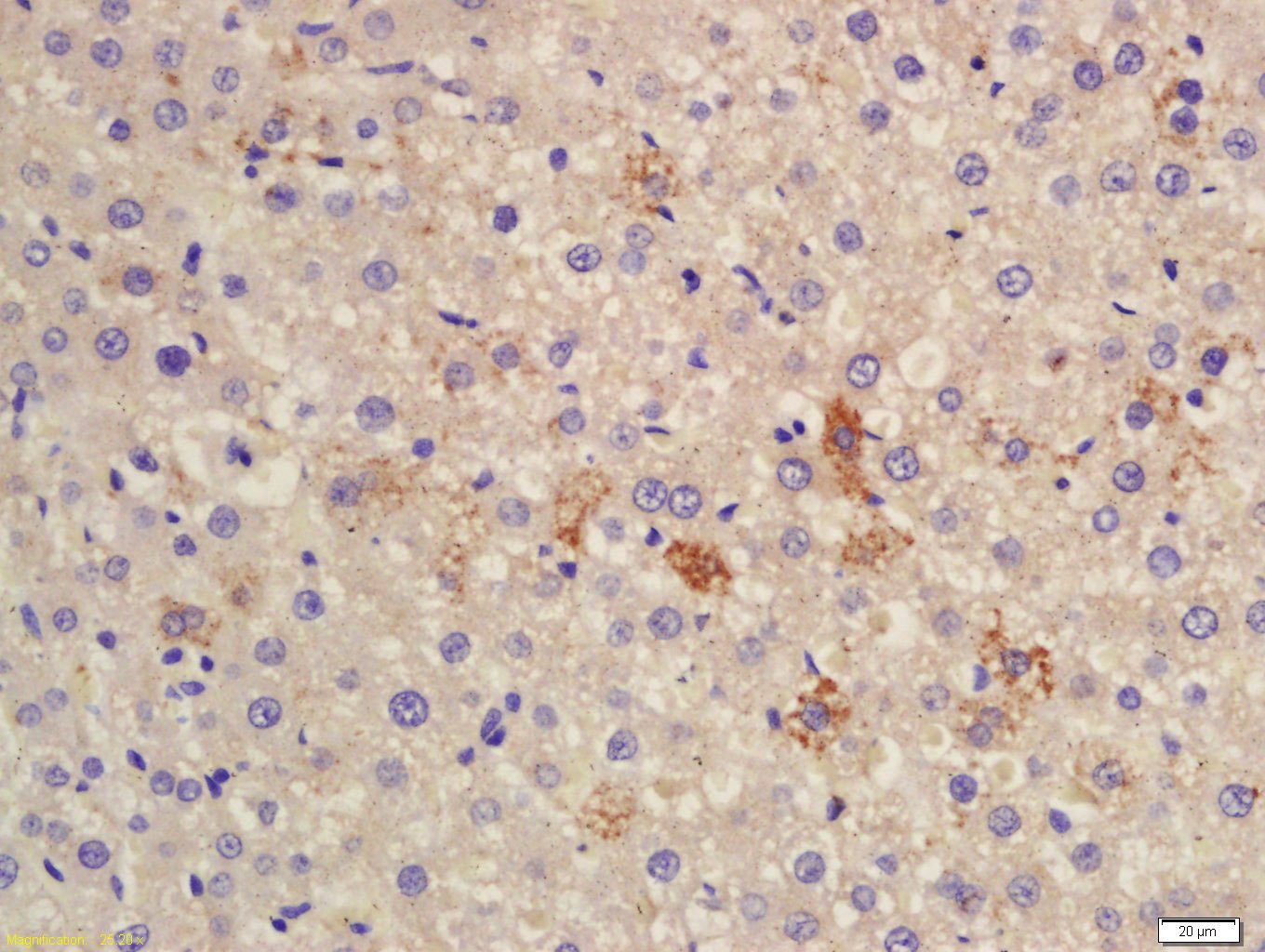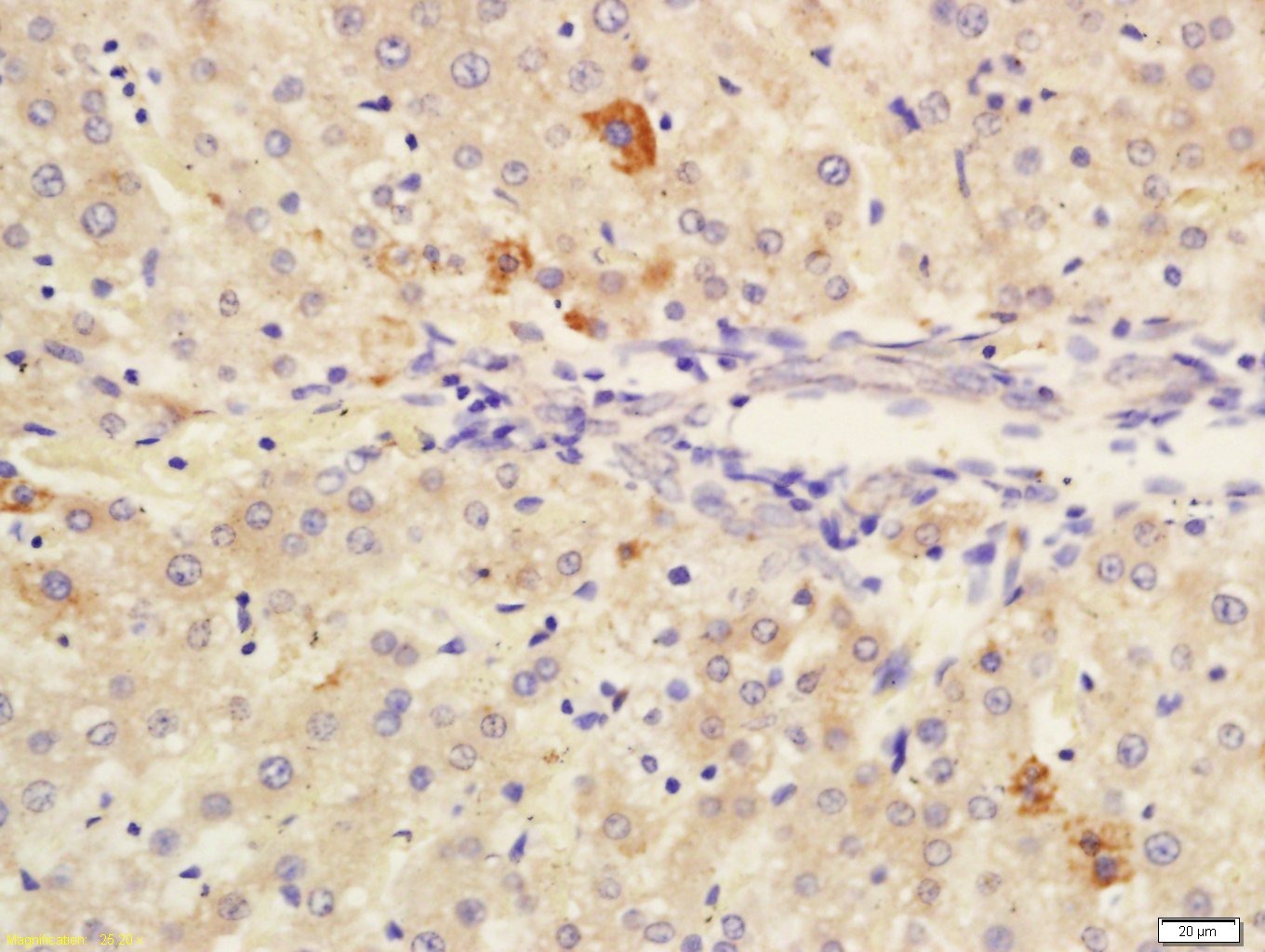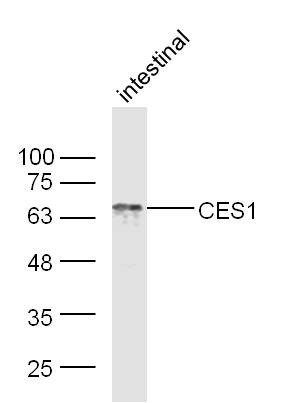Shopping Cart
Remove All Your shopping cart is currently empty
Your shopping cart is currently empty
Anti-CES1 Polyclonal Antibody is a Rabbit antibody targeting CES1. Anti-CES1 Polyclonal Antibody can be used in IF,IHC-Fr,IHC-P,WB.
| Pack Size | Price | USA Warehouse | Global Warehouse | Quantity |
|---|---|---|---|---|
| 50 μL | $220 | 7-10 days | 7-10 days | |
| 100 μL | $372 | 7-10 days | 7-10 days | |
| 200 μL | $528 | 7-10 days | 7-10 days |
| Description | Anti-CES1 Polyclonal Antibody is a Rabbit antibody targeting CES1. Anti-CES1 Polyclonal Antibody can be used in IF,IHC-Fr,IHC-P,WB. |
| Synonyms | TGH, SES1, REH, PCE-1, HMSE1, HMSE, hCE-1, CES2, CEH, CE-1, carboxylesterase 1, ACAT |
| Ig Type | IgG |
| Reactivity | Mouse,Rat (predicted:Human,Pig,Cow,Rabbit) |
| Verified Activity | 1. Tissue/cell: rat liver tissue; 4% Paraformaldehyde-fixed and paraffin-embedded; Antigen retrieval: citrate buffer (0.01M, pH6.0), Boiling bathing for 15 min; Block endogenous peroxidase by 3% Hydrogen peroxide for 30 min; Blocking buffer (normal goat serum) at 37°C for 20 min; Incubation: Anti-CES1 Polyclonal Antibody, Unconjugated (TMAB-00418) 1:200, overnight at 4°C, followed by conjugation to the secondary antibody and DAb staining. 2. Tissue/cell: rat liver tissue; 4% Paraformaldehyde-fixed and paraffin-embedded; Antigen retrieval: citrate buffer (0.01M, pH6.0), Boiling bathing for 15 min; Block endogenous peroxidase by 3% Hydrogen peroxide for 30 min; Blocking buffer (normal goat serum) at 37°C for 20 min; Incubation: Anti-CES1/ Liver Carboxylesterase 1 Polyclonal Antibody, Unconjugated (TMAB-00418) 1:200, overnight at 4°C, followed by conjugation to the secondary antibody and DAb staining. 3. Protein: intestinal (mouse) lysate at 40 μg; Primary: rabbit Anti-CES1/Liver Carboxylesterase 1 (TMAB-00418) at 1:300; Secondary: HRP conjugated Goat-Anti-rabbit Igg (secondary antibody) at 1: 5000; Predicted band size: 61 kDa Observed band size: 66 kDa    |
| Application | |
| Recommended Dose | WB: 1:500-2000; IHC-P: 1:100-500; IHC-Fr: 1:100-500; IF: 1:100-500 |
| Antibody Type | Polyclonal |
| Host Species | Rabbit |
| Subcellular Localization | Endoplasmic reticulum lumen. |
| Tissue Specificity | Expressed predominantly in liver with lower levels in heart and lung. |
| Construction | Polyclonal Antibody |
| Purification | Protein A purified |
| Appearance | Liquid |
| Formulation | 0.01M TBS (pH7.4) with 1% BSA, 0.02% Proclin300 and 50% Glycerol. |
| Concentration | 1 mg/mL |
| Research Background | This gene encodes a member of the carboxylesterase large family. The family members are responsible for the hydrolysis or transesterification of various xenobiotics, such as cocaine and heroin, and endogenous substrates with ester, thioester, or amide bonds. They may participate in fatty acyl and cholesterol ester metabolism, and may play a role in the blood-brain barrier system. This enzyme is the major liver enzyme and functions in liver drug clearance. Mutations of this gene cause carboxylesterase 1 deficiency. Three transcript variants encoding three different isoforms have been found for this gene. [provided by RefSeq, Jun 2010] |
| Immunogen | KLH conjugated synthetic peptide: human CES1 |
| Antigen Species | Human |
| Gene Name | Ces1 |
| Gene ID | |
| Protein Name | Liver carboxylesterase 1 |
| Uniprot ID | |
| Biology Area | Lipoprotein metabolism,Cholesterol Metabolism,Hydrolysis,Lipoproteins/Apolipoproteins,Drug metabolism,Cholesterol Metabolism,Hydrolysis,Lipoprotein metabolism,Cancer,Heart disease,Drug metabolism,Lipid metabolism |
| Function | Involved in the detoxification of xenobiotics and in the activation of ester and amide prodrugs. Hydrolyzes aromatic and aliphatic esters, but has no catalytic activity toward amides or a fatty acyl-CoA ester. Hydrolyzes the methyl ester group of cocaine to form benzoylecgonine. Catalyzes the transesterification of cocaine to form cocaethylene. Displays fatty acid ethyl ester synthase activity, catalyzing the ethyl esterification of oleic acid to ethyloleate. |
| Molecular Weight | Theoretical: 61 kDa. |
| Stability & Storage | Store at -20°C or -80°C for 12 months. Avoid repeated freeze-thaw cycles. |
| Transport | Shipping with blue ice. |
| Size | Quantity | Unit Price | Amount | Operation |
|---|

Copyright © 2015-2025 TargetMol Chemicals Inc. All Rights Reserved.